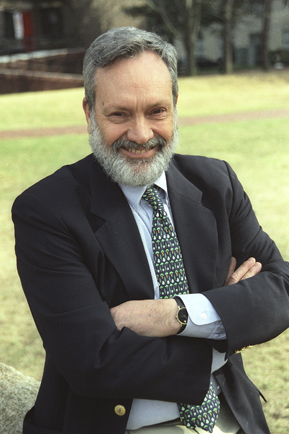BU, India Partner for Better Health
Plans include clinical research, education, interventions

Every year about two million people in India are diagnosed with malaria, a disease that hits pregnant women particularly hard. The mosquito-borne infection can lead to miscarriages, low birth weight, premature birth, and maternal anemia.
Public health officials in India know how to prevent the disease — they advise pregnant women to sleep under insecticide-treated mosquito nets and to take antimalarial medication. But putting those seemingly simple recommendations to work is not so easy.
While bed nets are plentiful, insecticide-treated nets are in short supply, says David Hamer, a School of Public Health associate professor of international health, who is leading two ongoing studies of malaria in pregnancy in India funded by the United States Agency for International Development (USAID). And while chloroquine is readily available, he adds, “pregnant women believe rumors that the drug causes miscarriages or other problems with the baby and are afraid to take it.”
When Hamer shares his findings about the prevalence of malaria in pregnancy and the extent of its effects on the health of mother and baby with Indian public health officials, he will also go to work with them to strengthen the country’s malaria prevention guidelines.
His project represents the type of broad-based collaboration between BU and India’s public health community that will expand in the years ahead, thanks to a coordinated series of education and research agreements recently initiated by BU’s Global Health Initiative (GHI). There are plans for joint research on infectious diseases, for student and faculty exchanges, and for training programs for public health officials. The collaborations will focus on things ranging from basic science to pharmaceutical development to the evaluation of public health interventions.
“We’re trying to do this A-to-Z approach, to put these pieces together from basic science to implementation and evaluation,” says Gerald Keusch, Medical Campus associate provost for global health, an SPH professor of international health and associate dean of global health, and director of the GHI. The collaborations will build on existing relationships between BU and academic, health-care, and governmental institutions in India, explains Jonathon Simon, an SPH associate professor of international health and director of BU’s Center for International Health and Development.
For example:
➢ In one agreement, signed with the Indian Council for Medical Research (India’s equivalent of the National Institutes of Health), BU researchers in the National Emerging Infectious Diseases Laboratories (NEIDL) will partner with virologists who track new outbreaks of infectious diseases.
In addition, BU has created a course, held for the first time this summer, to train Indian researchers and medical professionals to become public health educators in their country. The training is intended to help alleviate India’s shortage of public health workers, which leaves public hospitals and clinics understaffed by about 20 percent, according to a 2005 McKinsey report.
➢ In a separate agreement, BU, MIT, and the department of biotechnology in India’s Ministry of Science and Technology will develop a new UNESCO Regional Center for Education, Training, and Innovation to train Indian scientists to work in that country’s biotechnology sector, including partnering with BU experts in translating research into products for patient care.
“The idea behind the new center is to put a public health perspective on the biotech industry so that it serves the needs of India and the region, rather than just working to develop the next Viagra or other lifestyle drug to sell at a great profit,” says Keusch.
In addition to BU’s School of Medicine and SPH, the partnership will also involve the biomedical engineering program at the College of Engineering and the School of Management’s Institute of Technology Entrepreneurship and Commercialization.
➢ In another development, the Serum Institute of India, a privately held pharmaceutical company that makes more than half of the vaccines that UNICEF distributes all over the world, will work with NEIDL researchers on the rapid development of vaccines to treat emerging infectious diseases in India and South Asia.
➢ Keusch and his colleagues are also in discussions with the All India Institute of Medical Sciences in New Delhi and St. John’s Medical College in Bangalore to boost ongoing exchange programs for undergraduate and graduate students, clinical rotations, and research projects.
The new collaborations will be built on the existing relationship between the Center for International Health and Development and the India regional office of the International Clinical Epidemiological Network, a global network of scientists focusing on clinical epidemiology and evaluation of public health interventions. Most recently, this includes CIHD work with MCH-STAR (Maternal and Child Health Sustainable Technical Assistance and Research) a USAID-funded, multiyear project to help Indian health institutions improve maternal, neonatal, and child health and nutrition among poor and underserved populations through technical assistance, policy analyses, advocacy, and research.
“The intent is to build on these existing relationships, to deepen and broaden them,” says Simon. “I think we have a good start, the skeleton of some very special relationships in the Indian scientific community. The challenge right now is to take advantage of that skeleton and add meat onto the bones in terms of projects, joint research, faculty exchanges, and joint trainings.”
Chris Berdik can be reached at cberdik@bu.edu.
Comments & Discussion
Boston University moderates comments to facilitate an informed, substantive, civil conversation. Abusive, profane, self-promotional, misleading, incoherent or off-topic comments will be rejected. Moderators are staffed during regular business hours (EST) and can only accept comments written in English. Statistics or facts must include a citation or a link to the citation.